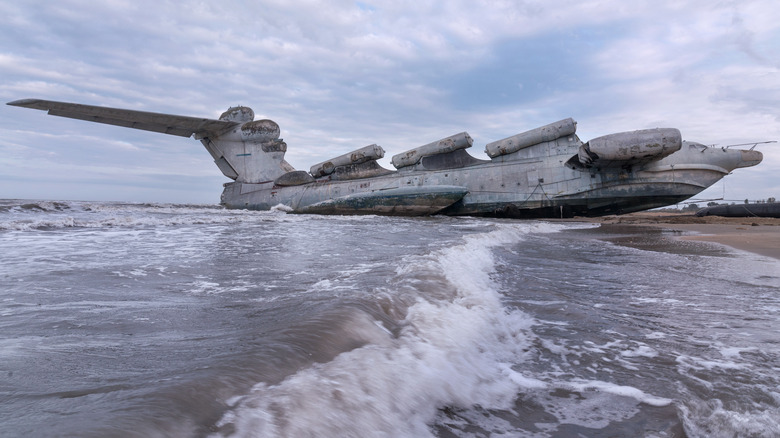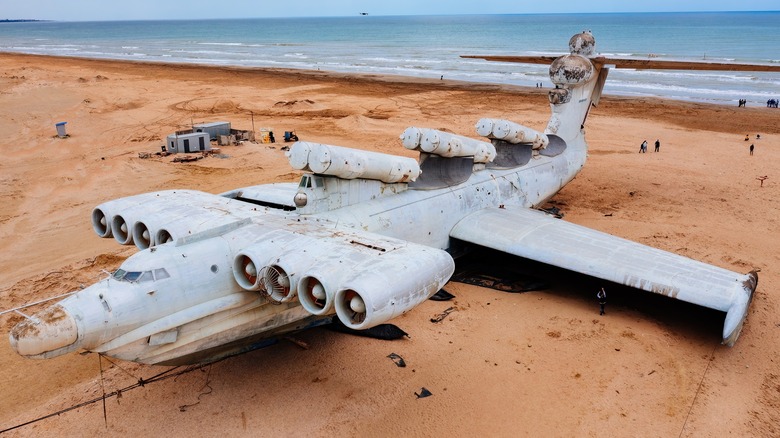The Caspian Sea Monster: A Monumental Soviet Aircraft That Defied Convention
In the summer of 2020, something enormous and unlikely clambered up onto the beach of Derbent, Russia's southernmost city nestled along the western shore of the Caspian Sea. It was longer than the world's largest passenger aircraft, weighed 380 tons, and had been lurking dormant among the waves for more than three decades. No, it wasn't King Ghidorah, but it once had the capability to be equally as destructive. It was the "Lun-class ekranoplan," the sole production model of its kind ever completed.
An "ekranoplan" is a particular type of vehicle that's technically classified as a ship, but are really something closer to an airplane crossed with a boat. These unusual craft make use of a piece of aerodynamic wizardry called the ground effect. When a plane flies very close to a flat surface — not much more than 16 feet — a cushion of air builds up beneath the wings, providing lift. Additionally, vortices that normally form at the wingtips and create drag are broken up, leading to faster speeds and more lift.
In the late 1960s, US spy satellites captured images of a massive Soviet ekranoplan, and analysts dubbed it the "Caspian Sea Monster." That was the experimental "Korabl Maket," or KM. Tests of the KM informed the design of the Lun, which went into service in 1987. After the collapse of the Soviet Union in the 1990s, it was essentially abandoned and forgotten at a naval base ... until now.
Monster isn't a scary enough word
The Lun (pronounced "loon," confusingly a Russian word not for a loon, but for a hen harrier) was a vehicle built for war. Massive though it was, its eight turbofans and use of the ground-effect phenomenon allowed it to achieve speeds of up to 340 mph. Because it flew mere feet above the water, it would have been incredibly difficult for radar sensors to detect it. But because it didn't touch the water itself, it could also avoid countermeasures such as sea mines or torpedoes.
Its purpose driven design was squarely focused on attacking submarines and aircraft carriers — namely those belonging to NATO countries, such as the United States. Among its most prominent features are the six giant guided missile launchers that look almost haphazardly attached to its back. Their payloads? Nuclear warheads, of course.
While additional Lun-class ships were slated for production, funding disappeared with the Soviet Union's collapse. The vehicle now waits on the beach at Derbent for a museum to be built around it, though it's unclear if or when that might happen.
In the meantime, ekranoplans are making something of a comeback, with private companies in several countries planning to combine the high efficiency of the ground-effect with electric battery technology to move passengers and cargo. But it wouldn't be a party if DARPA wasn't involved — the Liberty Lifter program is looking pretty monstrous itself.

